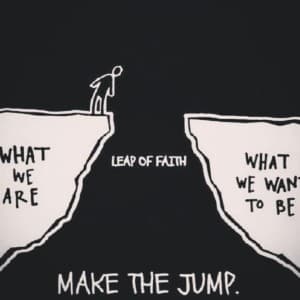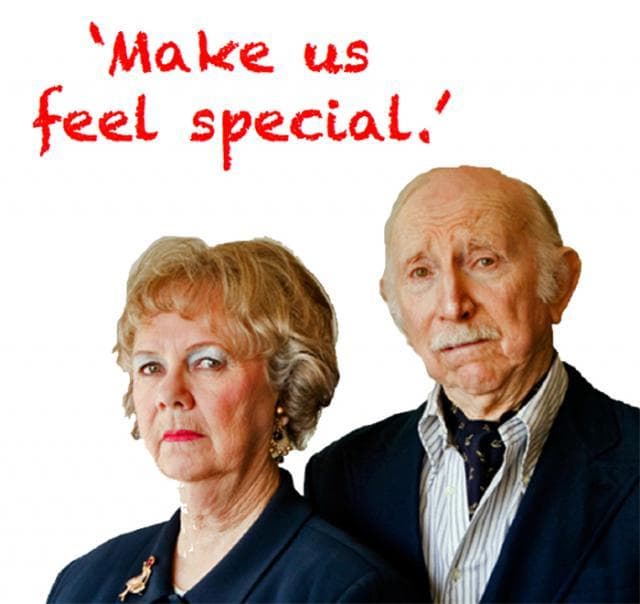Donor-centred fundraising – are you prepared to take a leap of faith?
- Written by
- Jackie Fowler
- Added
- November 05, 2015
With so much concern about how the charity sector treats donors and those it hopes will become supporters, suddenly the donor is right there in the spotlight. What do donors want? How can we meet those needs – and still ensure we deliver to income targets? What is the best way to put the donor in control? With Sir Stuart Etherington’s report out now, there is much to debate, discuss and progress.
So what does it mean to put the donor in control? To really put them at the heart of what you do? It’s something that the Camphill Village Trust (CVT), originally fundraising as Botton Village, has been trying to do for over 32 years. And perhaps the reason that so few charities have followed their path is that more control for the donor means less control for the charity.

CVT sets out how it will respect its friendship with donors in its cold packs. It offers all donors, in every communication, the chance not to hear from CVT again; to receive information but not appeals; to just to hear once a year at Christmas. It welcomes calls, offers visits and more information. CVT does not suggest how much you should give, but leaves you free to choose. CVT will not telephone you. They will not ask repeatedly, or suggest you upgrade your regular gift. They will not pass on your details.
CVT tries to bring you as close as possible to the people living and working in Camphill communities, showing their pride and sense of achievement, sharing, often in their own words, their lives and the fulfilment that they experience.
The results are impressive:
- One group of nearly 10,000 Christmas-only donors responding at over 61 per cent with an average gift of over £64.
- 60,000 people raising £1.2 million after costs Christmas 2014, with an overall response rate of nearly 28 per cent and an average gift of over £60.
- The average donor giving for over nine years, with many giving for much, much longer.
Burnett Works is conducting some research with CVT’s donors at the moment (October 2015),and people are saying some very revealing and insightful things. Some common views are emerging. One thing is abundantly clear: donors really do value their relationship with CVT, for a number of reasons (more on this soon).

But the issue for so many charities is that moving from their existing model to a model like this represents a real risk requiring a huge leap of faith. For many fundraisers, it’s a jump into the unknown and raises business-critical questions, amongst which doubtless are:
- How will I meet my targets if more than half of my donors choose to hear from us just once a year?
- How much might we lose if we did not suggest gift amounts, lead people upwards, ask people to upgrade, phone them to ask for a regular gift?
- How do I know that long-term lifetime value will improve and, in the meantime, how do we fund our work? And how do I persuade my fundraising director/chief executive/trustees that we must make these changes? Will the results only be evident five years down the line when I might not be here anyway?
These are real dilemmas for our sector.
CVT long ago chose a path that decided to honour and value donors, speak to them as friends and never to push or lead them, or treat them in a way that might make them feel uncomfortable. They opted for a philosophy that they felt was respectful, and ethical – that was aligned with the charity’s values. Because of this, perhaps most controversially, they chose not to test other approaches to establish what fared best financially. They simply believed too passionately in treating donors as partners and weren’t prepared to compromise on that.
Relationship fundraising means building a mutually beneficial relationship between charity and donor. Giving joy and reward to the donor, by enabling them to take the wonderful opportunities to help others offered by giving – through charities – to causes they care about. Relationship fundraising seeks to help donors feel personally connected to a cause and its beneficiaries.
Ken Burnett outlined this philosophy in 1992, in the seminal fundraising book of the same name. It is held in the highest regard by the fundraising profession, yet the times it is quoted far outweigh the frequency with which it is fully practised.
It’s a philosophy whose time has truly come – and charities have collectively been shamed (by some poor fundraising practice) into tighter regulation that will make it happen.
How it will happen now needs much debate and will challenge us all, as donor satisfaction is considered alongside targets (perhaps, as some have suggested, even as a key performance indicator in its own right) and the gritty, real-life challenges of how to find new supporters and how to raise the money needed.
I have no doubt that relationship fundraising works. And CVT is testament to this. But you have to be prepared to take the risks and believe: believe that it’s the right way to treat donors, believe in the long-term benefits, and get your charity’s senior management and trustees to believe too, so you have their full support.

Our research into how donors feel about CVT’s approach – which has been consistent now for an unprecedented number of years – is well underway and we look forward to sharing more of it in the coming weeks. So far, the words of one donor, in particular, have stuck in all our minds:
‘I always say that Christmas doesn’t begin until we’ve had the communication from Camphill.
Sometimes I have to delay opening it, as I know I’m going to find it so moving. I have to have time to myself when I’m going to open it.
I’m always overjoyed with what I read. It’s just an absolute joy. That’s always a high spot.’
Words like this warm my heart as a fundraiser. They are powerful proof that the ethical and donor-focused approach that CVT and Burnett Works have been taking for over 25 years really does nurture strong relationships, adding value to donors’ lives as well as supporting the charity’s beneficiaries. Perhaps you should take that leap of faith too?
















